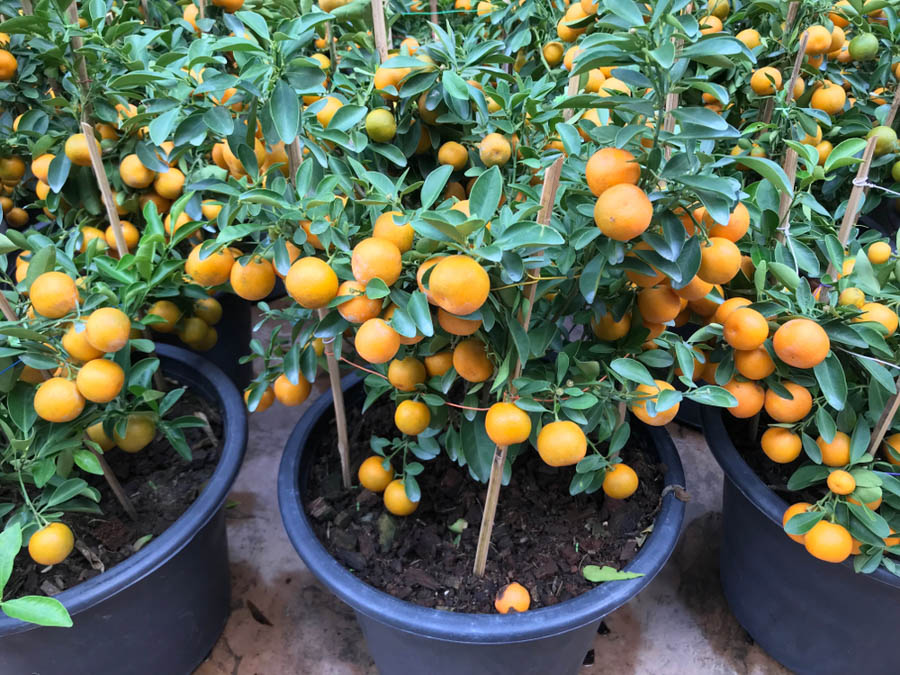Planting Orange Trees? Suggestions for Spacing, Espaliers and Intensive Planting

Regardless of the amount of garden space you have available, with thoughtful planting and spacing of orange trees, you can achieve a bountiful harvest of citrus fruits. Gardeners with unlimited or large acreage can easily plant citrus trees in orchard-like rows. Gardeners with less space can consider planting orange trees as espaliers along a fence or wall. Orange trees can make living fences and edible edges. And advanced gardeners can consider “intensive planting,” a process in which several citrus trees are planted in one hole.
Spacing. Tree size is determined by variety combined with rootstock. When planting citrus trees, provide sufficient space for trees to reach full size, or for the desired size if you will be pruning and trimming to maintain smaller size. Allow enough room for you to work and harvest around and between trees.
Size of all citrus trees can be managed by pruning, but this should be done regularly 1 to 2 or more times per year. Multiple years may be required to reduce a tree’s canopy, or bring it down in size in a way that is healthy for the tree, if it has been allowed to go unpruned for a few to many years.
Standard-size trees citrus are generally planted 15 to 20 feet apart from their centers, and dwarf trees being grown to their full size may be planted 8 to 12 feet apart.
Espaliers and Edible Hedges. In areas that receive full sun, Citrus trees can be grown vertically or in small spaces as espaliers. While any citrus can be espaliered, GardenZeus recommends dwarfed rootstocks if trees will be kept small. Tarocco blood oranges are traditionally considered a good variety for espaliering.
Oranges and other citrus may also be spaced closely and trained into evergreen, food-producing hedges and living fences.
Intensive Planting. Citrus and other fruit trees can be planted using a method known as “intensive planting” or “intensive backyard orcharding.” Up to four citrus trees on compatible rootstocks may be planted in a single hole, spaced 12 to 24 inches apart. Rootstocks from the same species and/or genus will grow together underground, in a natural process called “fusing,” so that multiple original trees begin to function as a single tree, sharing water and nutrients. Intensive planting allows larger yields from smaller spaces, and progressive harvesting of smaller crops; for example, you could plant 4 orange varieties that ripen successively to allow you to harvest oranges year-round, rather than one large single tree for which much of the fruit may go to waste after the tree gets too large for you to easily harvest from the ground.
Intensive backyard orcharding provides many benefits, but requires careful planning, a degree of skill and experience, and ongoing, regular maintenance and pruning to avoid closely planted trees becoming crowded and unmanageable, and is best explored by experienced home gardeners and orchardists.
Don’t know your GardenZeus zone? Click here.
Other articles of interest:
Year-Round Oranges in Mild Winter Areas of California
Are Your Oranges Ripe? Or Not?
Orange Trees: Should They Have Companion Plants?